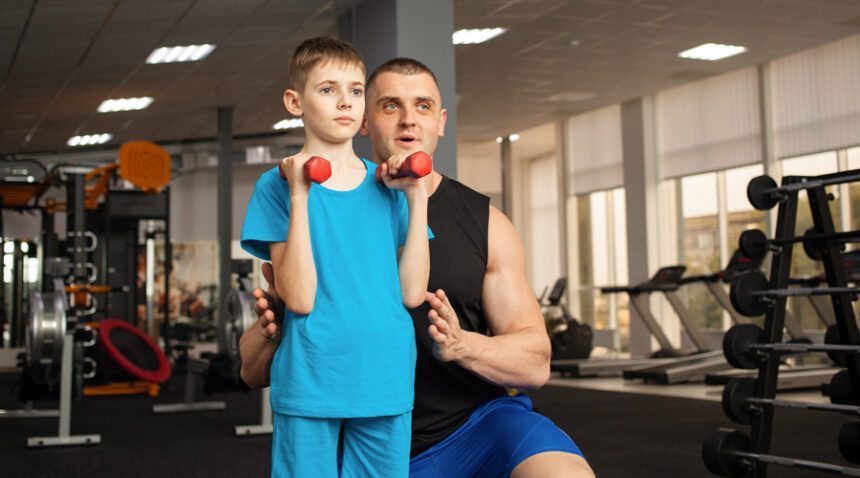Health experts and fitness buffs have long espoused the health benefits of building muscles—or strength training—for adults. It improves balance, builds stronger bones and muscles, and increases metabolism to help the body burn more calories. Strength training also can protect joints from injury.
The popularity of this type of exercise has now gained traction among kids and teens as a way to improve health and sports performance and enhance appearance.
Is it safe for kids to try strength training, and what should they do to protect their health and development?
The American Academy of Pediatrics and the American College of Sports Medicine have found that when done properly, strength training for preteens and teens can be safe and effective.
“The foundation kids can build with strength training is something they can use for the rest of their lives, whether they’re into sports or not, but parents need to make sure they’re starting with appropriate guidance,” says former UNC Wellness Center personal trainer Beth Blount.
Here are four things to know before your kids pump iron.
1. Proper form is a key to strength training.
Before children start strength training, they need to learn proper technique to help ensure they do not get hurt.
“Form is everything. You can look on YouTube to try to learn how to do exercises, and unfortunately you can see some really bad form,” Blount says. “We want to make sure we’re training in the right position so we don’t get injured. That’s my No. 1 goal for all of my clients, regardless of age.”
2. Work with a trained professional to safely learn how to perform exercises.
A knowledgeable professional, either in a group setting or one-on-one personal training, can make sure your child learns appropriate exercises and workloads. This person should have an approved strength-training certification and experience with youths and strength training.
“Ideally, you’d be putting kids on a weight machine, because the machine is going to help to keep your body aligned exactly how it should. But not every kid is going to fit on a machine. Most strength-training machines are made for adults,” Blount says. “Kids who are more on the smaller side are not going to be able to be sit upright on the machine.”
For these kids, Blount recommends body-weight training, such as pushups and squats, or using dumbbells.
“I think body-weight training is the best place for kids to start, to make sure they have good form,” Blount says. “Then they can add some dumbbells.”
3. Rest between workouts is important.
For best results, kids can do strength exercises for about 20 to 30 minutes two to three days per week. They should take at least a day off between sessions to give their muscles time to recover.
“They need to learn when to say when—being able to understand when they need to stop and take a break, so they don’t get hurt,” Blount says.
Teens also need to understand how the changes their bodies go through during puberty can affect their form.
“They go through these growth spurts, and they have these really long arms and these long limbs they’ve never had before. And they’re trying to figure out this new body and how to move it,” Blount says.
4. Strength training is just one part of an overall fitness program.
Strength training can have many potential benefits for children, including enhanced physical and psychosocial development, improved coordination, lower risk of injury in other sports, and prevention of chronic medical illnesses such as obesity and diabetes.
But for maximum health benefits, kids and teens also should get at least one hour of moderate to vigorous physical activity every day, including exercises that get their heart pumping, such as running, biking and playing outside. They also need proper nutrition to ensure their bodies can perform and recover.
“Be sure your child avoids processed foods, drinks plenty of liquids, and eats a healthy diet of fruits, vegetables and healthy proteins,” Blount says. “If you want to perform well, you need to put good fuel in your engine.”
As with any sport, talk to your doctor before letting your child start a strength-training program. If you need a doctor, find one near you.

